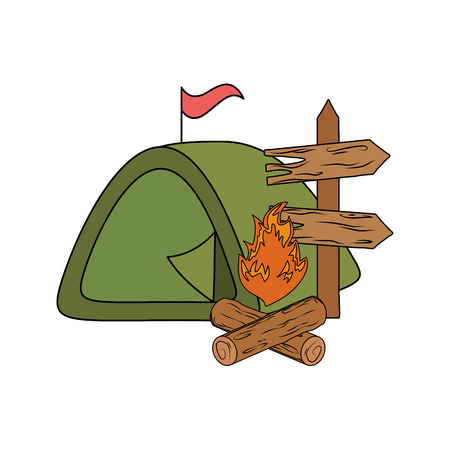Understanding Family-Friendly Campgrounds
When planning a camping adventure with kids, choosing a truly family-friendly campground is essential for both safety and enjoyment. But what exactly makes a campground family-friendly? Its more than just having playgrounds or kid-sized amenities; its about creating an environment where families can relax, explore, and bond with peace of mind. Look for campgrounds that emphasize secure surroundings, offer well-maintained facilities, and provide activities tailored to various age groups. Features such as gated entrances, clearly marked trails, and attentive staff go a long way in ensuring your child’s safety. Additionally, family-focused campgrounds often foster a welcoming community atmosphere, encouraging positive interactions between families and helping children make new friends. By understanding what sets these campgrounds apart, you’re already taking the first step toward a memorable and safe outdoor experience for your loved ones.
2. Evaluating Child Safety Features
When planning a family camping trip, your childs safety should be at the top of your checklist. Not all campgrounds are created equal when it comes to kid-friendly amenities and secure environments. By knowing what to look for, you can ensure peace of mind while creating joyful memories outdoors.
Key Child Safety Amenities to Look For
Begin by assessing the campgrounds layout and available features. Safe play is essential, so check if the site offers designated playgrounds with soft ground coverings and age-appropriate equipment. Fenced-in play areas prevent little ones from wandering off, especially near roads or water sources. Well-lit pathways between campsites, restrooms, and activity zones reduce the risk of nighttime trips and falls.
Checklist: Must-Have Child Safety Features
| Amenity/Feature | Why It Matters | What to Look For |
|---|---|---|
| Fenced Playgrounds | Keeps children within safe boundaries | Secure gates, clear sightlines for parents |
| Well-Lit Paths | Prevents accidents after dark | Consistent lighting from campsites to facilities |
| Campsite Proximity to Traffic | Reduces risk from vehicles | Campsites away from main roads, speed bumps present |
| Water Safety Measures | Protects kids around lakes or pools | Lifeguards on duty, locked gates on pool areas, signage for water hazards |
| On-Site Staff Presence | Quick response in emergencies | Visible staff or rangers, posted contact info at entrances and main buildings |
| First Aid Stations & Emergency Plans | Immediate care if needed | Easily located first aid kits, evacuation plans shared at check-in |
The Importance of Supervision and Communication Tools
No matter how many safety measures are in place, adult supervision is always necessary. Choose campgrounds that encourage community watchfulness or provide walkie-talkies for larger grounds. Some family-friendly sites offer wristbands or ID tags for children in case they get separated from their group—small details that make a big difference in child safety.

3. Considering Location and Accessibility
When planning a family camping trip, the location and accessibility of your chosen campground are crucial elements that directly influence both safety and enjoyment. Proximity to medical facilities is especially important when traveling with young children. Unexpected bumps, scrapes, or allergic reactions can happen at any time, so it’s wise to select campgrounds that are within reasonable driving distance of urgent care or a hospital.
Ease of access also matters for families with kids. Campgrounds with well-maintained roads and clear signage help avoid unnecessary stress after a long drive. Consider if the site is accessible for strollers or wagons—especially if you’re packing all those kid-friendly essentials. Avoid remote locations that require off-road vehicles unless your family is prepared for such an adventure.
The surrounding environment plays a big role in safety, too. Look for campgrounds situated away from fast-moving rivers, steep drop-offs, or dense forests where little ones might wander off easily. Instead, opt for open areas with defined boundaries or natural barriers that help keep kids close by.
Ultimately, choosing a conveniently located and easily accessible campground gives you peace of mind and more time to focus on making memories together—whether you’re roasting s’mores under the stars or exploring nature trails as a family.
4. Reviewing Campground Policies and Community Vibes
When it comes to choosing a campground that’s truly family-friendly, digging into the details of campground policies and sensing the overall community vibe is essential. These factors can make or break your camping experience—especially when child safety is your top priority.
Understanding Key Campground Rules
Family-oriented campgrounds often establish specific guidelines to create a safe, enjoyable environment for everyone. Take time to review rules about:
| Policy | Why It Matters for Families |
|---|---|
| Noise Curfews | Ensures restful nights for children and peaceful mornings; reduces disruptive behavior. |
| Pet Restrictions | Limits potential risks from unfamiliar animals; helps prevent accidents or allergies. |
| Supervision Requirements | Makes clear who is responsible for minors in communal areas like playgrounds or pools. |
| Visitor Regulations | Manages outside guests to maintain a secure, familiar environment for kids. |
| Alcohol & Fire Policies | Reduces hazards by controlling open flames and potentially unsafe behaviors around children. |
The Benefits of a Family-Oriented Atmosphere
Beyond written policies, pay attention to the campground’s overall atmosphere. A place with a friendly, community-focused vibe often translates into safer play spaces, supportive neighbors, and shared values around child safety. Look for signs such as:
- Organized family activities or events (like nature walks, arts & crafts, movie nights)
- Campsites arranged for easy supervision of kids at play
- Caring staff who know families by name and are proactive about safety concerns
- A network of parents watching out for each other’s children—a true “it takes a village” spirit
Community Vibe Checklist
- Do you see lots of families with young children?
- Is there a sense of friendliness among campers?
- Are staff members visible and approachable?
- Do amenities cater specifically to kids and their needs?
The Bottom Line
Taking time to carefully review both official policies and the unwritten “vibe” will help you select a campground where safety isn’t just a rule—it’s part of the culture. That peace of mind lets your whole family relax, connect, and create beautiful memories in the great outdoors.
5. Checking Reviews and Recommendations
One of the smartest ways to ensure your family’s campground experience is safe and enjoyable is by tapping into the collective wisdom of other parents. Start by visiting trusted platforms like Google Reviews, Yelp, and TripAdvisor—these are goldmines for honest feedback from fellow families. Dont overlook niche camping forums or local Facebook parenting groups, where you can find real-time advice specific to your area or chosen destination.
When scrolling through testimonials, keep an eye out for detailed descriptions about safety features. Look for mentions of secure playgrounds, attentive staff, clear campground rules, and well-lit common areas. Parents often share insights about whether campsites are close to busy roads or water sources—details that aren’t always obvious in official listings but are crucial for your child’s safety.
Pay attention to recurring themes in reviews. If multiple families highlight issues like lack of supervision at pools or poorly maintained equipment, consider it a red flag. On the flip side, consistent praise for family-friendly activities, clean facilities, and responsive management is a good sign you’re on the right track.
Don’t hesitate to reach out directly to reviewers who’ve camped with kids at your shortlisted sites. A quick message can provide deeper insights and even spark new friendships with like-minded adventurers.
By relying on genuine experiences from other parents, you’ll gain peace of mind and find a campground that truly puts child safety first—so you can focus on making unforgettable family memories under the stars.
6. Planning Age-Appropriate Activities
When choosing a family-friendly campground, it’s essential to consider the activities and amenities that align with your children’s ages and interests. Not every campground is created equal—some are designed for adventurous teens, while others cater to younger kids with playgrounds or nature discovery programs. Start by reviewing the campground’s website or calling ahead to ask about their kid-focused offerings. Look for features like splash pads, supervised craft workshops, junior ranger programs, or gentle hiking trails suitable for little legs.
Safety should always be at the forefront of your planning. For younger children, prioritize campgrounds that offer enclosed play areas, shallow swimming spots with lifeguards on duty, and organized group activities led by trained staff. Older kids might enjoy biking trails, rock climbing walls, or fishing ponds—but make sure these activities come with clear safety guidelines and accessible first-aid facilities. If your family enjoys water sports or boating, check if the campground provides properly sized life jackets and enforces age-appropriate rules.
Don’t forget to consider the general vibe of the campground as well. Some sites host large events or evening gatherings that may not be ideal for families seeking a quieter environment for young kids’ bedtime routines. Others have strict quiet hours and family-oriented event calendars that foster a peaceful atmosphere. By matching your campground choice to your children’s developmental stages and interests, you’ll set the stage for safe adventures and lasting memories for everyone in your family.


